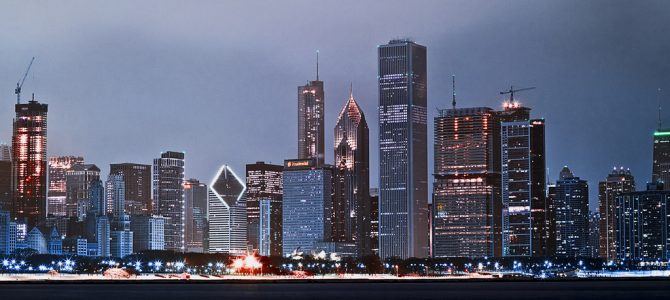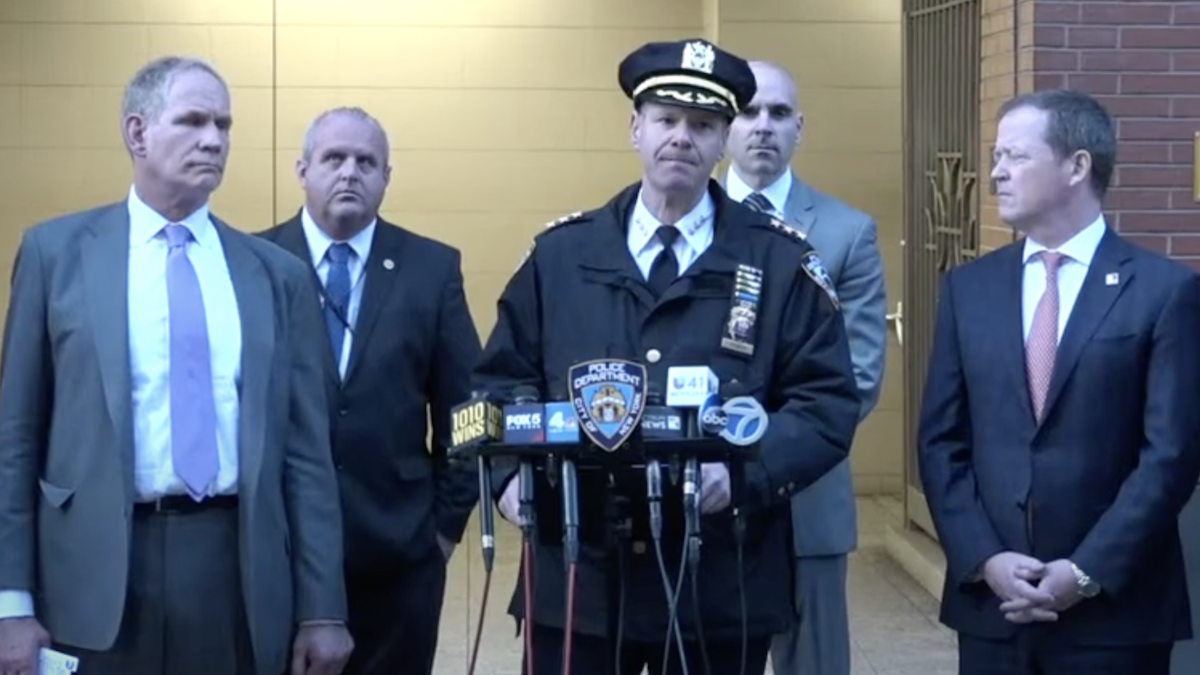
Maybe you’ve seen the headlines. “Chicago Hits 500 Homicides for 2016 After Deadly Labor Day Weekend,” reported USA Today. The Chicago Tribune followed up shortly after: “Chicago Passes Another Grim Milestone: More Than 3000 Shot This Year.” Then the bombshell: “Chicago Has Had More Murders Than New York and L.A. Combined This Year.” That was only by October.
It’s all true. My city — the city I love — is crime-infested. From the outside it looks like the Wild West, and from the inside it’s not always better. The South and West Sides, where most of the crime hotspots are, can be a living Hell. What kind of city is so out of control that a nine-year-old can be targeted for a revenge killing? What kind of city lets its poorest residents rot in food deserts, job deserts, and dire poverty? Chicago, of course.
I know what non-Chicagoans think: what a hellhole. The mental imagery the press has painted leads one to think of Chicago as a giant, dilapidated, falling-apart city on the verge of imploding. Guns must be everywhere, and if you aren’t careful you’ll wind up dead. But let me make it clear: that’s the furthest thing from the truth. Chicago’s crime doesn’t define the city, and the city isn’t in the shape outsiders assume it is.
You’ve Not Heard the Whole Story about Chicago
Let me tell you about Chicago. We have the most beautiful cityscape in the country. Lake Michigan is to the east, suburbia is to the west, and everything in between is urban, with one of the most recognizable and beautiful skylines in the country. The Sears (now Willis) Tower, John Hancock, CNA Building, Aon Center, and others make Chicago instantly recognizable to anyone even marginally acquainted with the city.
Our cultural institutions are unique in America because of their permanence and impact on the culture writ large. Chicago, for instance, is the only city outside New York to have a permanent “Hamilton” production (and before that we had “Wicked” and “Book of Mormon,” among others). Our comedy scene is what made “Saturday Night Live” funny. Our opera and symphony orchestra are among the best in the world.
Our newspapers, especially the Tribune, have played integral parts in American history. Our architecture is a “living museum” because of the variety of styles and schools that call Chicago home. Our universities, especially the University of Chicago, are on par with East Coast Ivy League schools, and in some cases exceed them.
Chicago’s neighborhoods have a spunk to them that is different from other cities’ neighborhoods. This point is difficult to understate. They are so defined that they’re almost walled off from each other, which can be both good and bad. But they have character, and in a lot of cases they feel like cities within the city.
Lincoln Square feels like a European main street with a distinctively Chicago vibe. Bridgeport is so blue-collar it you’ll think you’re back in the industrial 1950s and ‘60s. Chinatown is on par with San Francisco’s, and ours is doing better than most across the country. Behind every neighborhood is a certain feel — a Midwestern one.
Chicago: It’s the People
But this isn’t a competition. If it was, Chicago would lose to New York every time (we’re the Second City for a reason). Chicago is special not because of the architecture, schools, or orchestras, although those all contribute to our uniqueness. Chicago is special because of the people who live here. Despite the crime, despite the fiscal mess, despite the corruption, Chicagoans never go down for the count.
Carl Sandburg’s famous poem “Chicago” describes the city thusly:
Under the smoke, dust all over his mouth, laughing with white teeth,
Under the terrible burden of destiny laughing as a young man laughs,
Laughing even as an ignorant fighter laughs who has never lost a battle,
Bragging and laughing that under his wrist is the pulse, and under his ribs the heart of the people,
Laughing!
This, too, is a truth of Chicago. Chicago doesn’t moan about its situation. The Chicagoans I see are always looking for ways to improve their community and make their city safe, with or without the help of politicians. These days, it’s mostly without the politicians.
For example, look at the Englewood “Mothers Against Senseless Killings” (MASK), or their other well-known name: the “Army of Moms.” It is what it sounds like. An “army” of community mothers patrols Englewood, one of Chicago’s most dangerous neighborhoods, day and night to curb violence.
When they go out, they’re largely successful. Shootings on the blocks they patrol are almost nonexistent, which is eye-popping given the area. The purpose of MASK is to create a community where one may not exist. In a DNAinfo Chicago interview from August, MASK founder and Englewood native Tamar Manasseh explained the rationale behind the group: “The theory is that if you build community, violence stops. It’s not necessarily saying ‘Put the guns down.’ It’s about giving people a reason to put the guns down. And if there are 100 people out here on the corner eating, who going to come through here shooting?”
We Care About Our Neighborhoods
The sense of community that Manasseh speaks about is the backbone of Chicago. Another group is also working to connect the city and break down the walls that neighborhoods often form around themselves. My Block, My Hood, My City (M3 for short) takes teenagers from low-income neighborhoods and puts them into areas they normally wouldn’t go. M3 calls it an “exploration,” and that’s pretty accurate.
One of the first explorations the group did was taking teenagers from Roseland and North Lawndale — two high-crime, high-poverty South Side communities — and visiting Wicker Park, the hip artsy neighborhood of the city that still has some “grunge” to it. That exploration and others have been successful despite not having much funding or city-sanctioned support.
There are more examples. Becoming a Man (BAM) is another Chicago community organization that targets at-risk young men from low-income, high-poverty neighborhoods and provides mentorship opportunities to keep them off the streets, away from crime, and focused on school. BAM currently mentors approximately 4,000 young men in the city, but Mayor Rahm Emanuel recently announced that he wants to help expand the program, and other programs, to be able to mentor the 7,200 young men from eighth through tenth grades who live in the 20 most crime-heavy neighborhoods.
MASK, M3, and BAM are just three of the dozens, perhaps hundreds, of mentorship and community organizations in the city that come from the people, not the politicians. That’s what makes Chicago great. The fact that Chicagoans value community, and actively work to improve it, is what makes the city special.
Our cultural institutions help, of course. But there’s more to a city than nice museums and college campuses. Many people who live in Englewood, Roseland, and North Lawndale probably don’t care much about “Hamilton.” But they do care that there’s someone around the corner looking out for their children and working against the tide to break the cycle of crime.
Chicago isn’t a perfect city. No one is saying it is. But those who rip Chicago because of the headlines they see do a disservice to the city and to themselves. Chicago is beautiful in spite of itself, and nothing the critics say will change that.









